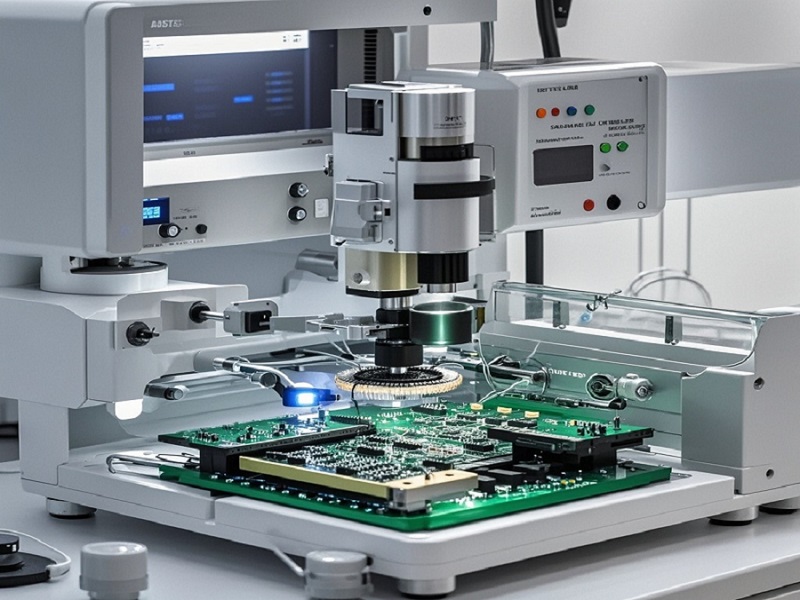In the era of rapid development of science and technology, electronic products have penetrated into all aspects of our lives, from smart phones, tablets to smart home devices, medical instruments, etc., all of which are composed of complex electronic circuits.
The PCBA (Printed Circuit Board Assembly, printed circuit board Assembly) as the core component of electronic products, its quality directly determines the performance and reliability of the entire product. Therefore, PCBA testing has become an indispensable key link in the production process of electronic products.

PCBA testing
1.The importance of PCBA testing
(1)Ensure product quality
PCBA testing can greatly improve the quality of products by finding and fixing potential defects and problems before they leave the factory. Through comprehensive testing of electronic components, circuit connections and functional modules on the PCBA, hardware failures such as short circuits, open circuits, poor welds, component damage, as well as logic errors and functional defects in software programs can be effectively detected. For example, in the production process of smart phones, if there is no rigorous PCBA test, there may be problems such as poor call quality, touch screen failure, and insufficient battery life, which seriously affect the user experience.
(2)Identify potential defects in advance
In the production process of PCBA, problems such as poor welding, component damage, short circuit or open circuit may occur due to various reasons. PCBA testing can detect these potential defects in a timely manner before the product leaves the factory, preventing bad products from entering the market. If these defects are not found in the test stage, then in the product use process may lead to product failure, performance degradation and even security risks, to the user brings great inconvenience, but also to the production enterprise will bring high after-sales maintenance costs and reputation loss.
(3)Improve product reliability
Reliability is one of the key indicators of electronic products. Through a series of tests, such as environmental tests (high temperature, low temperature, humidity, etc.), aging tests, etc., you can simulate the work of PCBA under various extreme conditions, and check its stability and durability in different environments. This helps ensure that the product will operate reliably throughout its life cycle, reducing downtime and the number of repairs due to failures.
(4)Meet market demand
As consumers increasingly demand the quality and performance of electronic products, companies must pass strict PCBA testing to ensure that products can meet market demands. Only fully tested products can be recognized and trusted by consumers in the market, thereby improving the market competitiveness of products. For example, in the field of automotive electronics, the quality and reliability of PCBA is directly related to the safety performance of the car, so it must be rigorously tested and certified before it can be put into use.
2.PCBA testing methods and technologies
(1)In-Circuit Testing (ICT)
ICT is a test method that detects circuit connectivity, component parameters and welding quality by contacting the test point on the PCBA with a test probe. It can quickly and accurately detect hardware faults on the PCBA, such as short circuit, open circuit, resistance value deviation, etc. ICT test equipment usually includes test fixtures, test instruments and test software. The test fixture is customized according to the design of PCBA for fixing and connecting PCBA; The test instrument is used to measure various parameters of the circuit; Test software is used to control the test process and analyze the test results.
(2)Functional Testing
Functional testing is a test method to verify the functions of PCBA. It simulates various input signals and conditions of PCBA in the actual working environment to detect whether its output meets expectations. Functional testing can include power management testing, communication interface testing, audio and video testing, sensor testing and so on. For example, for the PCBA of a wireless headset, functional tests such as Bluetooth connection test, audio playback test, microphone recording test are needed to ensure that it can work properly.
(3)Environmental Testing
Environmental testing is a test conducted to verify the performance and reliability of PCBA under a variety of harsh environmental conditions. Common environmental tests include high temperature test, low temperature test, humidity test, vibration test, impact test and so on. For example, in the aerospace sector, PCBA must be able to function properly under extreme temperature, pressure and vibration conditions, so rigorous environmental testing is required. Environmental testing equipment usually includes environmental test chamber, shaking table, impact testing machine, etc.
(4)Burn-In Testing
The burn-in test is to power on the PCBA for a long time under certain working conditions to accelerate the exposure of its potential faults. Through the aging test, the early failure of the product can be screened out, improve the reliability and stability of the product. Burn-in testing is usually performed at high temperatures to accelerate the aging process of electronic components. The aging test equipment includes the aging test rack and power supply.
In short, PCBA testing is the key link of electronic product quality assurance, it is of great significance to improve product quality, reduce production cost and meet market demand. With the continuous development and innovation of electronic technology, PCBA test technology will also continue to progress and improve, providing more powerful support for the development of electronic products.